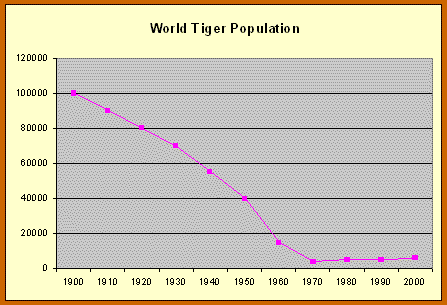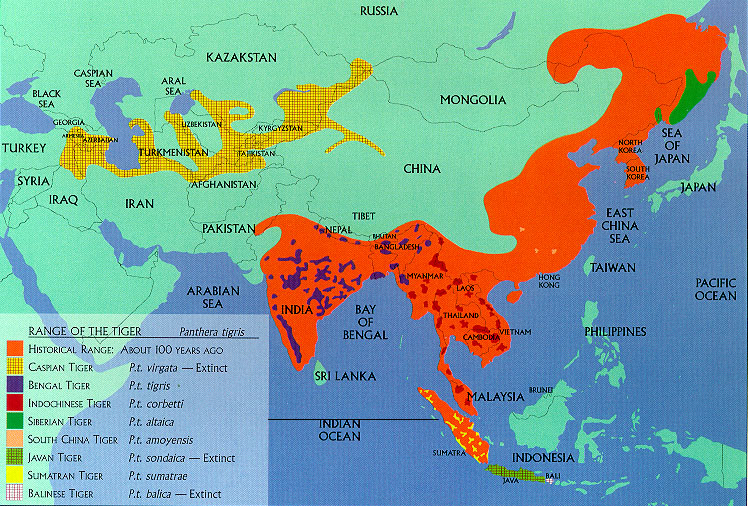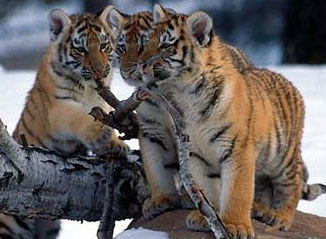In
the 1970's we came dangerously close to losing forever one of the world most
magnificent creatures. Poaching, deforestation, and human expansion brought
all species of tiger to the brink of extinction. Indeed, over the past century,
3 of the 8 sub-species that existed became extinct; the Caspian, Javan and Balinese
tigers. Today, we are by no means out of the woods. All remaining sub-species
of tiger are endangered, making the tiger species as a whole nearly extinct.
Figure 2 shows how the range of tigers
has changed over the past 100 years. Once ranging all throughout India, southeast
Asia, central Asia, and eastern China, only small pockets of natural habitat
remain(3).
1. https://www.defencejournal.com/globe/2001/august/tiger.htm
2. Dreamworld.com, "Tiger Plight," https://www.dreamworld.com.au
3. Environmental Investigation Agency; https://www.eia-international.org/Campaigns/Tigers/wild.html
As
Figure 1 shows, the tiger population dropped over the past 100 years by a factor
of 25 - from an estimated 100,000 in 1900 to only 4000 in the 1970's. A concerted
effort by wildlife protection groups in the 1970's halted their rapid demise
and the global population of tigers in the wild has grown modestly to around
6000 at the turn of the century(1).
Poaching continues to this day, however. When a Russian poacher can make as
much from a single tiger kill as he would normally earn in 6 years, it will
take more than words to halt this tragedy(2).
Figure
1
Figure
2 (source: Environmental
Investigation Agency)
This
site is dedicated to the effort of saving the tiger from extinction, hopefully
combining a serious message with some fun and appreciation for Panthera tigris:
1. Aid and Assistance - See this section for ideas on
how you can help the cause.
2. Education - Learn more about the problem and about
tigers in general.
3. Fun Stuff/Appreciation - Appreciating tigers via pictures,
sounds, drawings, and trivia.




